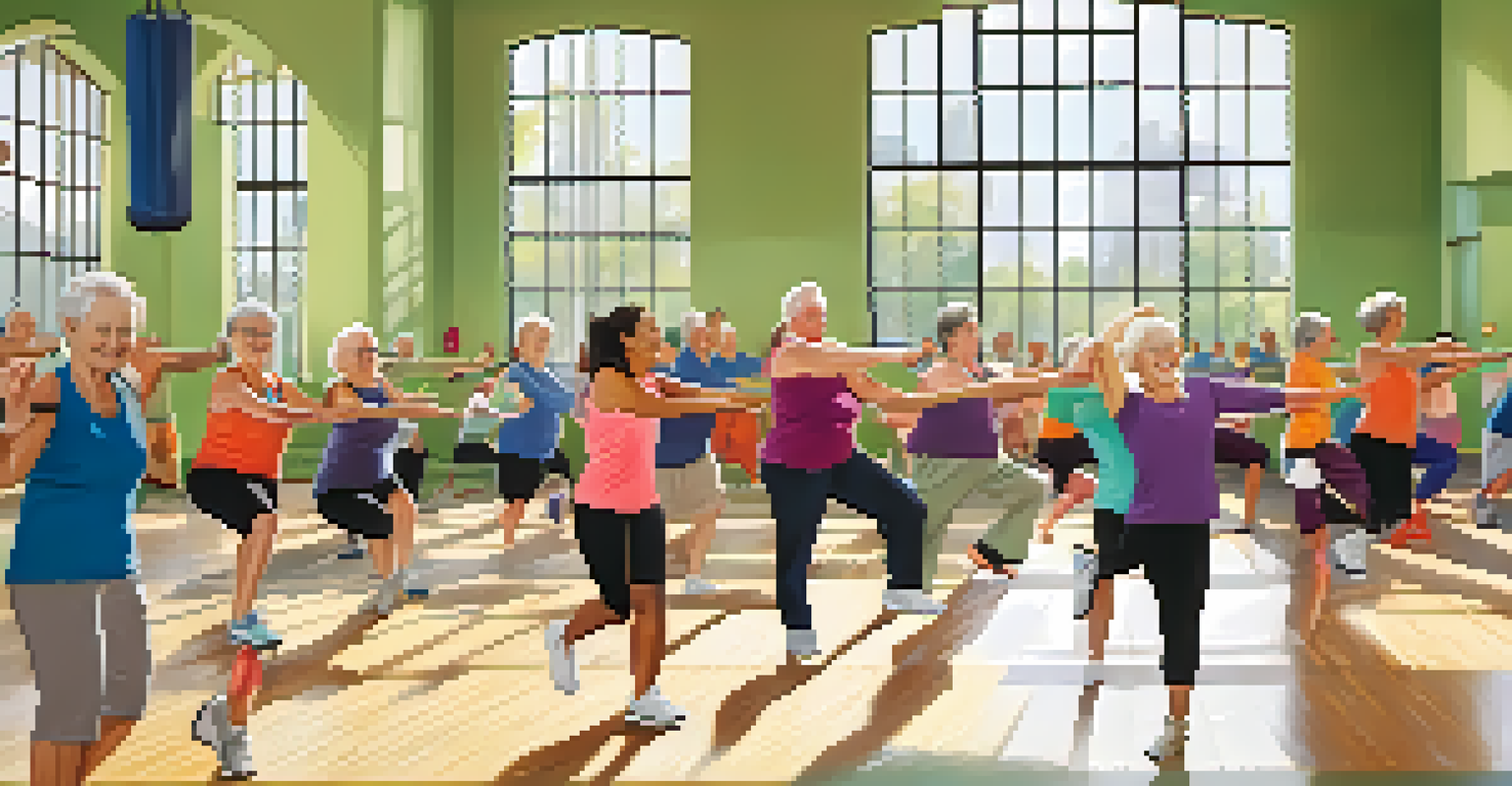Setting Realistic Fitness Goals for Seniors and Disabled Individuals

Understanding the Importance of Fitness Goals for Seniors
Fitness goals provide seniors with a sense of direction and purpose. They help individuals focus on what they want to achieve, whether it's improving mobility or enhancing overall health. Understanding the importance of these goals can motivate seniors to stay active and engaged in their wellness journey.
Setting goals is the first step in turning the invisible into the visible.
Moreover, having clear fitness goals can lead to better mental health. As seniors achieve small milestones, they experience a boost in confidence and self-esteem. This positive reinforcement encourages them to continue pursuing their fitness aspirations.
Ultimately, setting fitness goals is about enhancing quality of life. For seniors, it's not just about physical activity; it’s about fostering independence and enjoying everyday activities with ease.
Assessing Individual Capabilities and Limitations
Before setting fitness goals, it's crucial to assess individual capabilities and limitations. This assessment may involve a check-up with a healthcare professional to understand any medical conditions or physical constraints. Knowing where you stand helps in crafting achievable and safe goals.

For seniors and disabled individuals, recognizing personal strengths is equally important. Perhaps you have experience with swimming or enjoy walking in the park. These preferences can guide the planning process and make goals more enjoyable and attainable.
Set Clear Fitness Goals
Establishing specific and achievable fitness goals helps seniors stay motivated and engaged in their wellness journey.
By understanding both strengths and limitations, individuals can set realistic goals that promote safety and well-being. This personalized approach fosters a sense of accomplishment without the risk of injury or frustration.
Setting SMART Goals for Fitness Success
One effective method for goal setting is the SMART framework, which stands for Specific, Measurable, Achievable, Relevant, and Time-bound. For example, instead of saying, 'I want to get fit,' a SMART goal would be, 'I will walk for 15 minutes, three times a week for the next month.' This clarity helps individuals stay focused.
Success is the sum of small efforts, repeated day in and day out.
Each component of SMART goals plays a crucial role. Specific goals provide clarity, while measurable goals allow for tracking progress. Achievable goals ensure that individuals aren’t setting themselves up for failure, and relevant goals align with personal interests and lifestyles.
Lastly, setting a time frame creates a sense of urgency and commitment. By breaking down fitness aspirations into manageable chunks, seniors and disabled individuals can celebrate small victories along the way, which keeps motivation high.
Incorporating Flexibility into Fitness Routines
Flexibility is key when developing fitness routines for seniors and disabled individuals. Life can be unpredictable, so it's essential to allow for adjustments in the schedule or type of exercise. This adaptability helps maintain consistency and reduces the chances of feeling overwhelmed.
For instance, if someone plans to walk outdoors but the weather doesn't cooperate, having a backup plan, like indoor stretching or chair exercises, can keep the momentum going. Incorporating various activities also helps prevent boredom and keeps the fitness journey exciting.
Flexibility in Routines Matters
Incorporating flexibility into fitness routines allows seniors to adapt to life's unpredictability while maintaining consistency.
By remaining flexible, individuals can find joy in movement without the pressure of strict routines. This approach promotes a sustainable lifestyle that prioritizes health and well-being.
Celebrating Small Achievements Along the Way
Celebrating small achievements is vital in keeping motivation alive. Each milestone, no matter how minor, represents progress and deserves recognition. Whether it's completing a week of workouts or simply feeling more energized, acknowledging these successes can boost morale.
Sharing these accomplishments with friends, family, or support groups can multiply the joy. Encouragement from loved ones reinforces the commitment to fitness and creates a sense of community. Plus, it can inspire others to pursue their own fitness goals.
Remember, fitness is a journey, not a destination. By focusing on what has been achieved rather than what remains, seniors and disabled individuals can cultivate a positive mindset that encourages continued effort.
Seeking Professional Guidance When Necessary
For many seniors and disabled individuals, seeking professional guidance can be a game changer. Personal trainers, physical therapists, or fitness coaches can provide tailored programs that address specific needs and goals. Their expertise ensures that exercises are safe and effective.
Consulting with healthcare providers before starting any fitness regimen is also crucial. They can offer recommendations based on individual health conditions, which helps in creating a well-rounded approach to fitness that prioritizes safety.
Build a Supportive Community
Connecting with others through classes or online forums fosters encouragement and accountability in pursuing fitness goals.
Moreover, fitness professionals can also help individuals adapt exercises to their unique circumstances, making workouts accessible and enjoyable. This personalized support can significantly enhance the overall fitness experience.
Building a Supportive Community for Fitness
A supportive community can make a world of difference in pursuing fitness goals. Whether it's joining a local exercise class, finding a workout buddy, or participating in online forums, connecting with others can provide encouragement and accountability. This social aspect can transform fitness from a solitary endeavor to a shared experience.
Sharing challenges and triumphs with like-minded individuals fosters camaraderie. It’s inspiring to hear others’ stories and strategies, which can offer new ideas and perspectives on fitness. Additionally, having someone to share the journey with can make workouts more enjoyable.

Creating a supportive environment not only enhances motivation but also enriches the overall fitness journey. It reminds individuals that they are not alone in their pursuits, making every step towards their goals a collective effort.